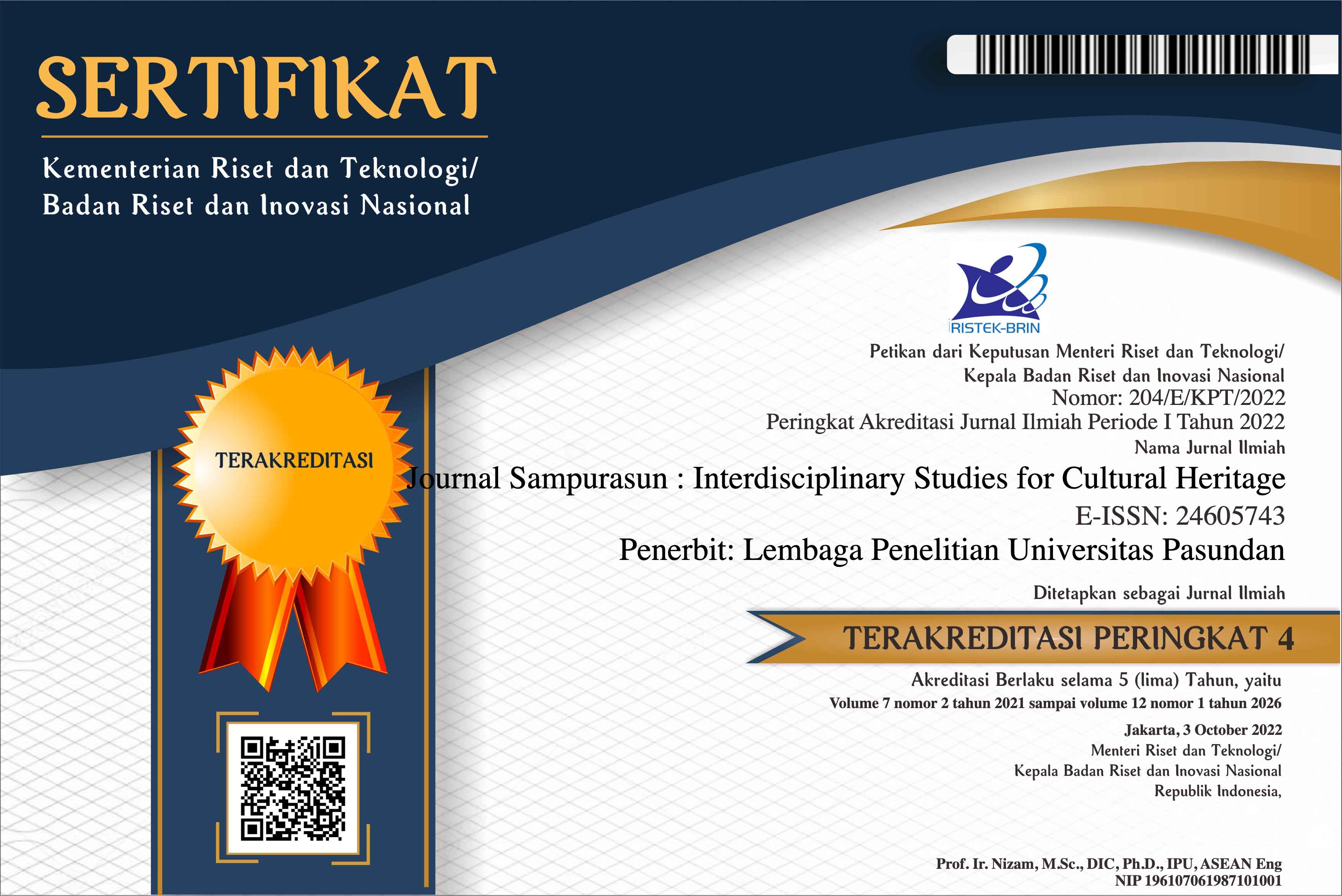SURFACING AND DOCUMENTING THE TRADITIONAL GA’DANG DISHES OF BAYOMBONG, NUEVA VIZCAYA AND ITS POTENTIAL AS A CULTURAL TOURISM ELEMENT
Everyday Food; Festive Food; Special Occasions; Food Preparation and Methods; Customary Food Beliefs
DOI:
https://doi.org/10.23969/sampurasun.v2i2.166Abstract
This study was undertaken to preserve and promote the traditional Ga’dang dishes of Bayombong, Nueva Vizcaya. Interviews were conducted among 20 Ga’dang respondents such as elders, barangay chairman and a researcher last February 2014 to obtain the information needed. Books, municipal records, Internet sources and barangay files were also compiled. From the general findings of the study, the following conclusions were drawn: (1) Their traditional dishes can be classified according to everyday and festive food. Everyday food are the dishes typically prepared such as ininaw, pinaracao, nilabbab, ginataang suso barale, while their festive foods usually prepared during special occasions and gatherings are inandela, laoya, tinuno and pinatarak; (2) The sources of food are rivers and streams where they obtain fish and shellfish. They also till their agricultural lands to grow crops and vegetables. Aside from these, they also practice livestock raising; (3) In terms of food preparation methods and procedures, they practice boiling, grilling, steaming and preserving through drying and salting; (4) They still adhere to their customary food beliefs and practices such as praying before preparing food, sharing of food with neighbors which is their gesture of showing generosity and offering of foods for the departed which is known as atang; (5) The traditional dishes have potentials as cultural tourism element because they are greatly associated with their customs, traditions and beliefs. Although some of their methods of preparation as well as recipes are not indigenous to them, they modified them such that they have developed them as distinctly Ga’dang dishes. In order to preserve and promote the traditional dishes, the younger Ga’dang generation should be taught about them so that they will be able to integrate them in their daily lives.
Downloads
Downloads
Published
Issue
Section
License
Copyright Notice
Authors should not withdraw their submitted papers because the withdrawal wastes voluntary works devoted by an associate editor and reviewers. But, we accept the withdrawal of a submitted paper if authors have unavoidable reasons. In the event that a manuscript is to be withdrawn from submission to Sampurasun Journal, a letter must be sent to the editorial office requesting withdrawal by e-mail (sampurasunjournal@unpas.ac.id) with its scanned PDF file, before the notification of acceptance for publication.
The withdraw request letter must include the following information. Paper ID, Paper title, Authors names, Reason why the paper must be withdrawn, and Date and signatures of all the authors (or signature of the contact author).
If only the contact author signs the letter, he/she must obtain the agreement of the withdrawal from all the other authors and the letter must include the description that all the other authors agreed the withdrawal. The journal will not withdraw a manuscript from peer review until such a letter has been received. Authors must not assume their manuscript has been withdrawn until they have received appropriate notification from the editorial office. Withdrawal of a manuscript subsequent to acceptance for publication will only be granted in the most exceptional of circumstances.
After the paper is accepted for publication, the withdrawal is not permitted in principle. The authors must always pay the charge even if the withdrawal is permitted. Any request of withdrawal that does not follow the above procedure is treated as invalid. If illegal submission, e.g., plagiarized or duplicate submission, is found for a paper, the withdrawal of the paper will never be permitted and the authors will be punished based on the rule. It is not acceptable practice to withdraw a manuscript in the event of acceptance at another journal. This constitutes dual submission. The editorial office of the other journal will be notified of your actions. In such circumstances Sampurasun ISCH may chose to impose appropriate punitive action subject.
Withdrawal Penalty
Author is not allowed to withdraw submitted manuscripts, because the withdrawal is waste of valuable resources that editors and referees spent a great deal of time processing submitted manuscript, money and works invested by the publisher. If author still requests withdrawal of his/her manuscript when the manuscript is still in the peer-reviewing process, author will be punished with paying $200 per manuscript, as withdrawal penalty to the publisher. However, it is unethical to withdraw a submitted manuscript from one journal if accepted by another journal. The withdrawal of manuscript after the manuscript is accepted for publication, author will be punished by paying US$500 per manuscript. Withdrawal of manuscript is only allowed after withdrawal penalty has been fully paid to the Publisher. If author don't agree to pay the penalty, the author and his/her affiliation will be blacklisted for publication in this journal. Even, his/her previously published articles will be removed from our online system.


















